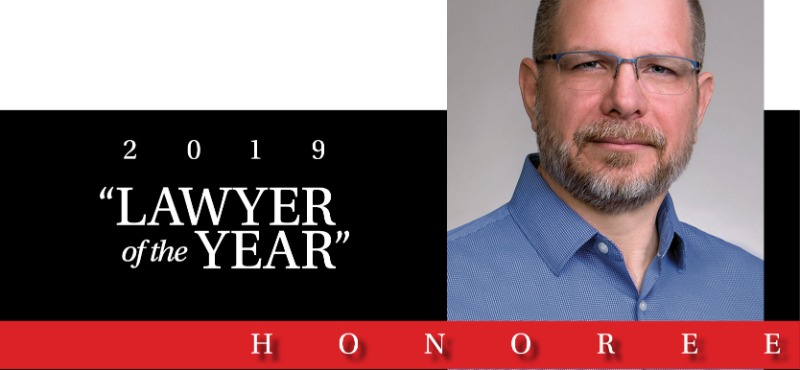When Sam Myers graduated from law school in 1972, immigration law was still very much an evolving field. It was only four years since the Hart-Celler Act had taken effect, abolishing national origins quotas and establishing a preference system that focused on family relationships and critical skills; over the next four decades, Myers would have the opportunity to play a role in shaping American immigration policy.
“I became interested in immigration law because I liked the idea of helping people,” Myers says. “It was fairly early in my career when I made a commitment to focusing in the area, and I’ve since been fortunate to see firsthand how the field has evolved.”
Myers handled his first immigration case while serving in the United States Coast Guard as a legal officer following law school. In 1976, he joined a small law firm in Minnesota where he handled environmental, employment discrimination, and Chapter 11 bankruptcy cases, in addition to immigration matters. “At the time, there weren’t many lawyers in Minnesota handling immigration cases,” Myers says—an observation that led him to develop a concentration in the field.
“There were only four or five lawyers in the state working in immigration, and I got to thinking that with employers needing lawyers to help them with immigration matters on a more regular basis, concentrating in the area would be a good way to differentiate myself,” Myers explains.
In 1979, Myers joined the American Immigration Lawyers Association (AILA)’s predecessor organization, the Association of Immigration and Nationality Lawyers (AINL), as member number 436 in the organization (he has since served as president of AILA). A year later, he committed his practice to the employment side of immigration law when he published the article, “A General Practitioner’s Guide to Principles of Immigration, Non-Immigrant Visas and Employment of Aliens.”
“From there, the field of immigration law just exploded,” Myers notes. Indeed, AILA now has more than 13,000 members; and following the passage of the Immigration Act of 1990, there was a substantial increase in the number of new immigrants admitted annually to the United States. “The combination of that law and the internationalization of the labor market really made immigration a booming practice, and it just continued to grow through the turn of the century,” Myers says.
In 1996, Myers and his law partner, Elizabeth A. Thompson, founded the corporate immigration law firm Myers Thompson, P.A. Their collaboration, begun in the mid-1980s when they started working together at the Popham Haik law firm, is today one of the longest lasting partnerships of practicing immigration lawyers in the upper Midwest.
“Being able to maintain a long-term collaboration and friendship with Elizabeth for going on 30 years has been very rewarding,” Myers says. “And that longevity is typical of much of our staff—we have people who have been working with us for more than a decade, and I think that helps tremendously when it comes to being an effective team for our clients.”
As part of its practice, Myers Thompson focuses on helping companies manage their internal immigration policies. Moreover, Myers is well known for his advocacy work in the immigration field: he helped draft parts of the 1990 immigration legislation and the ensuing regulations, and he regularly travels to Washington, D.C. to improve employment-based immigration laws.
“Before the 1990 legislation, we had talked with our clients about their problems with the immigration laws, and we were able to solve many of those issues legislatively,” recalls Myers, who, in response to problems faced by a rural health care provider, conceived and helped draft the original “Conrad State 20” legislation, which enabled foreign-born physicians to acquire permanent residence by serving in areas with doctor shortages.
With immigration reform again on the horizon, Myers continues his active law practice and advocacy efforts while also making time for teaching and human rights work. Myers previously taught at the William Mitchell College of Law Immigration Law Clinic, which he founded in 1983; and he now serves as an adjunct faculty member at the University of Minnesota Law School. Myers also serves as board chair of The Advocates for Human Rights, a Minnesota-based non-profit organization that includes a refugee and immigrant asylum program among its projects.
“In the near future, immigration reform will prompt even more explosive growth than we saw in the early 1990s, and our firm is committed to helping our clients benefit from those changes,” Myers says.
If you’re looking for legal guidance on any matter, use the Best Lawyers Find a Lawyer tool to connect with experienced lawyers ready to assist.
































